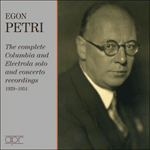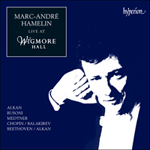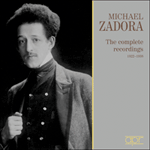
Welcome to Hyperion Records, an independent British classical label devoted to presenting high-quality recordings of music of all styles and from all periods from the twelfth century to the twenty-first.
Hyperion offers both CDs, and downloads in a number of formats. The site is also available in several languages.
Please use the dropdown buttons to set your preferred options, or use the checkbox to accept the defaults.

 PERFORMANCE
PERFORMANCE RECORDING
RECORDING

 PERFORMANCE
PERFORMANCE RECORDING
RECORDING PERFORMANCE
PERFORMANCE RECORDING
RECORDINGfrom notes by Claire Jackson © 2021
extrait des notes rédigées par Claire Jackson © 2021
Français: Marie-Stella Pâris
aus dem Begleittext von Claire Jackson © 2021
Deutsch: Viola Scheffel
 Egon Petri - The complete Columbia and Electrola solo and concerto recordings Egon Petri - The complete Columbia and Electrola solo and concerto recordingsEgon Petri (1881-1962) studied with Busoni and was perhaps his greatest disciple. In his fusion of intellect with an astonishing virtuoso technique he echoed his master and gives us today the clearest idea of Busoni’s own legendary pianism.» More |
 Marc-André Hamelin live at Wigmore Hall Marc-André Hamelin live at Wigmore Hall‘Some of the most astonishing playing of the decade’ (BBC Music Magazine Top 1000 CDs Guide) ‘Titanic … awe-inspiring … truly phenomenal … a disc I cannot recommend too highly. Buy it!’ (Gramophone)» More |
 Michael Zadora - The complete recordings Michael Zadora - The complete recordings‘Few of the recordings can be a touch steely in places due to their rarity, but Mark Obert-Thorn ensures that Zadora’s tonal qualities are respected a ... ‘Zadora’s affinity for and commitment to this repertoire certainly cuts through the sonic grime. With so many reissues of reissues of reissues on the ...» More |
 Vida breve Vida brevePiano sonatas by Chopin (No 2) and Hough (No 4) are the twin peaks of a typically stimulating recital which—as always from Stephen Hough—spans centuries and styles with assurance. How often do Liszt’s ‘Funérailles’ and Gounod’s ‘Ave Maria’ share t ...» More |

